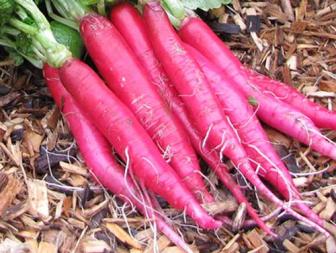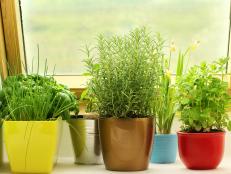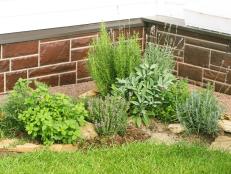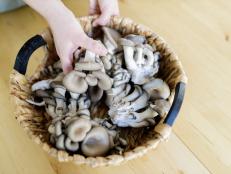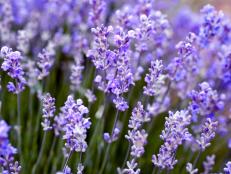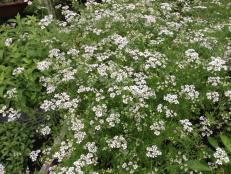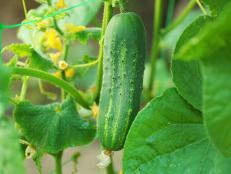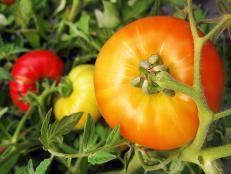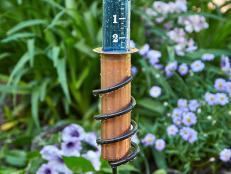How to Grow Microgreens
Packed with nutrition, microgreens add robust vegetable or herb flavor to dishes, but they can be costly to buy at the grocery store. Luckily, they’re very easy to grow from seed at home and can be grown year-round indoors, regardless of climate.
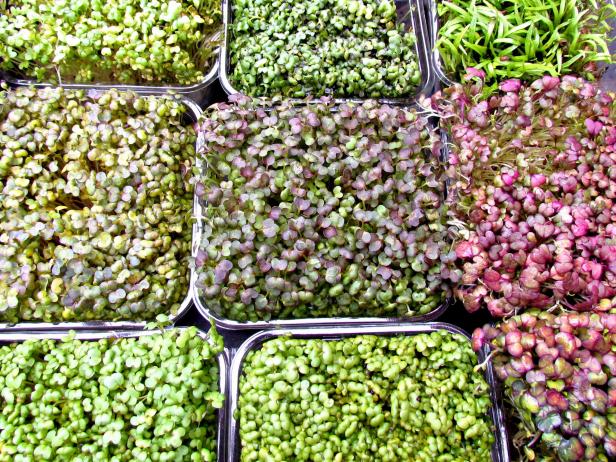
Anne Gibson
Microgreens can be started in even the tiniest of containers and spaces. You can make miniature greenhouses for seed raising and microgreens by upcycling plastic food containers.
What Are Microgreens?
Microgreens are sometimes confused with sprouts, but they’re not the same. Here’s a little botanical lesson to explain the difference.
Seeds contain a wealth of nutrition that goes into developing new plants, and all that nutrition is packed into the first stages of plants. Sprouting is the first stage of germination, when the seed coat is just broken through and the new sprout and new root (called a radicle) are still attached. Sprouts are typically grown with seeds just soaking in water, no soil-like substrate needed to hold the plants in place.
Microgreens are the stage after sprouting when the plants start to develop leaves, typically during the first two weeks post-sprouting. The first set of simple leaves are called cotyledons (or sometimes called seed leaves), and the second set of leaves are called true leaves — microgreens are typically harvested as the true leaves start to develop.
What Seeds Make the Best Microgreens?
Plants typically grown for their leaves or roots make the best microgreens. These include vegetables as well as herbs.
Where to Buy Vegetable and Flower Seeds Online
Find out where to buy your vegetable, flower and herb seeds based on a variety of important factors, including widest selection, most heirlooms, organic seed and regional varieties.
You can use any variety of seed of these crops to grow microgreens, but some seed companies, including Johnny’s Selected Seeds, also sell seeds chosen specially for growing as microgreens, based on performance in trials — meaning they’re proven to grow tasty, reliable microgreens.
Some popular microgreen seeds include:
How to Grow Microgreens
Microgreens can be grown in any flat container that’s an inch or two deep, and many people opt to use recycled plastic food containers made of plastic, thick paper or aluminum.
You can also use seed trays, flats and pots that you use for other seed starting. Microgreens need drainage, so you’ll want to poke a few holes in the bottom of any container that doesn’t already have them.
1. Add Seed Starting Mix
Fill your container with 1 to 2 inches of seed starting mix, which is a fungus-free, lightweight material that allows tender new roots to develop without rotting. You can buy seed starting mix, or make your own seed starting mix. Gently flatten the mix to get a smooth, even surface.
2. Scatter Seeds
Scatter your microgreen seeds as evenly as possible on top of the soil. Press gently to make sure the seeds have good contact. Then sprinkle more seed starting mix over the seeds just to cover.
3. Mist Soil
Lightly mist the soil until damp, but not soaking wet, with water in a spray bottle. You can top the container with a layer of plastic to create a greenhouse effect, but it may not be necessary.
4. Place Container in Sunny Spot
Set your containers in a spot where they’ll receive at least 4 hours of bright light daily. This could be a sunny windowsill, on a countertop beneath under-cabinet lights, or under a lamp — just be sure to protect your surface by placing a tray under your container.
5. Continue to Mist
Mist twice daily to keep soil moist. You should see sprouting within a few days to a week, depending on the seed you’re growing.
After sprouting, continue to mist twice daily to keep the soil moist but not wet. If you used a cover, remove it after sprouting. Watch for sprouts to grow the first set of leaves.
6. Harvest Microgreens
Microgreens are ready to harvest when the true leaves (the second set of leaves) first appear and when they’re about two inches tall. This usually takes about two weeks, maybe a little more.
Simply cut the greens down at the soil level and rinse off to use. You can reuse the same soil to grow a new crop.
Troubleshooting
- If microgreens appear leggy or pale, they are not getting enough light. Move them to a better light source.
- If microgreens flop over, the soil is likely too dry. Give them a little more water and they should stand back up.
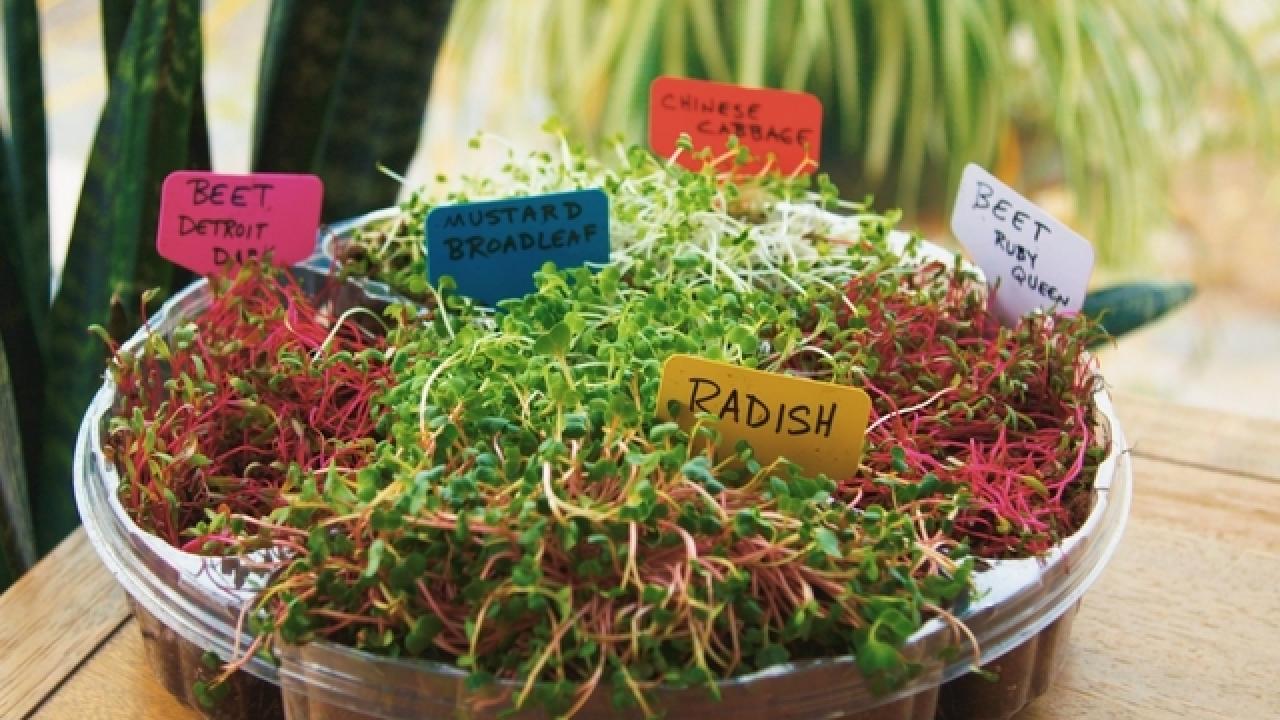
How to Use Microgreens
Add microgreens to salads, use on sandwiches and wraps to add veggie taste and crunch, or top any dish (soup, pasta, meat) with microgreens to add a splash of fresh color and flavor. Microgreens have a delicate texture but strong flavor, so a little goes a long way.







